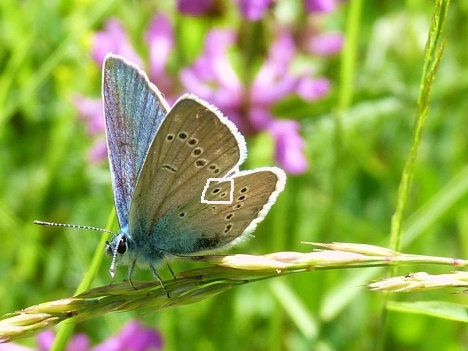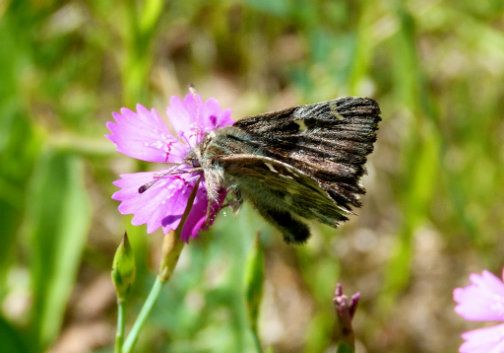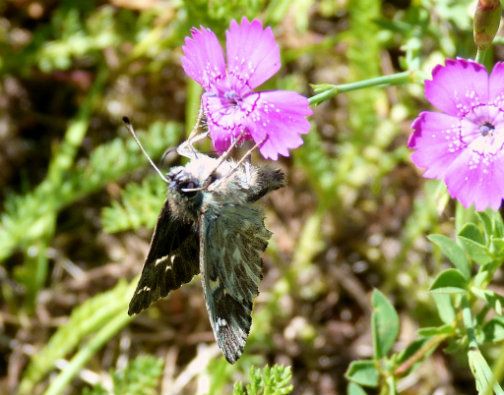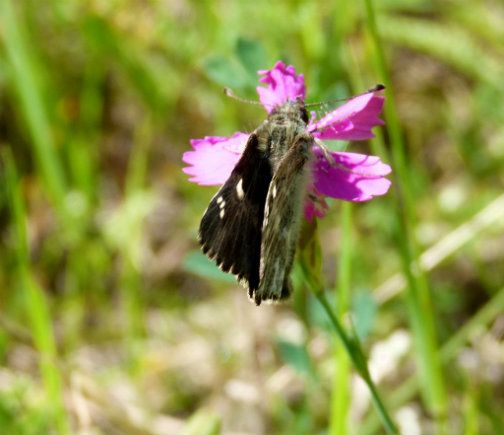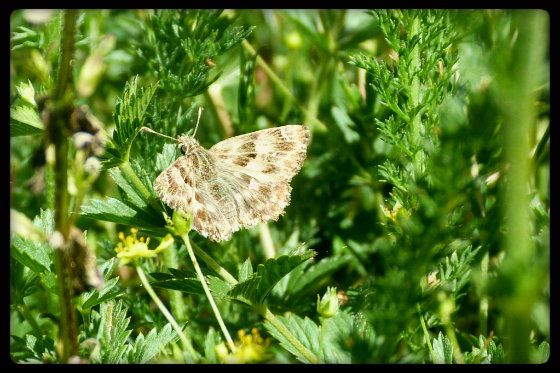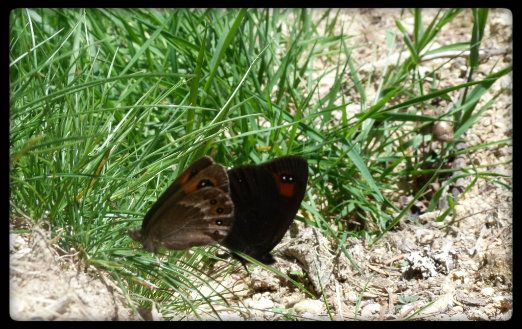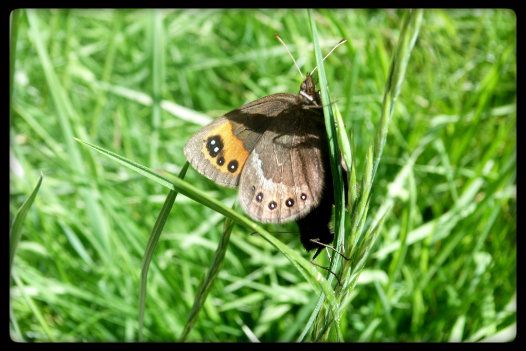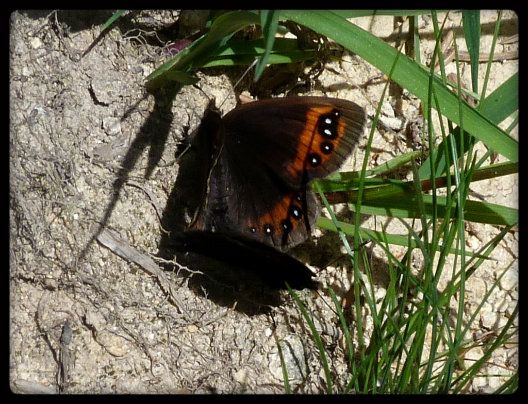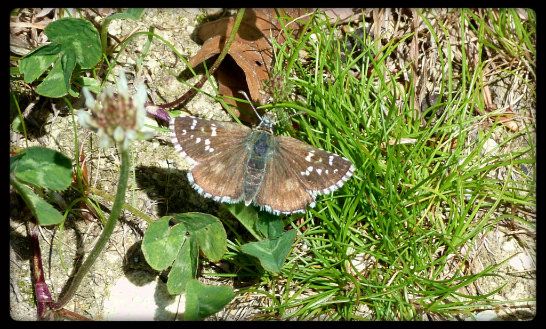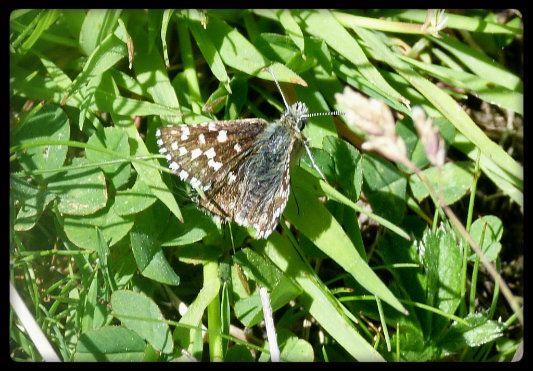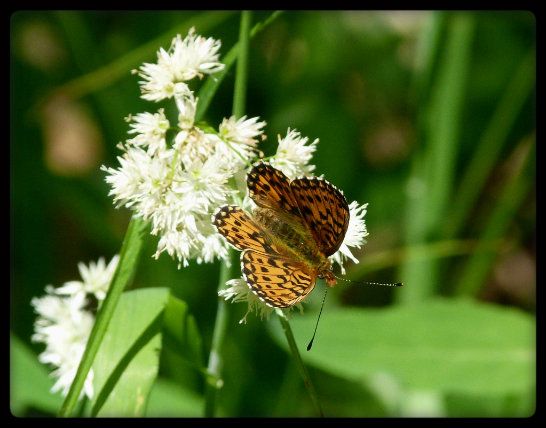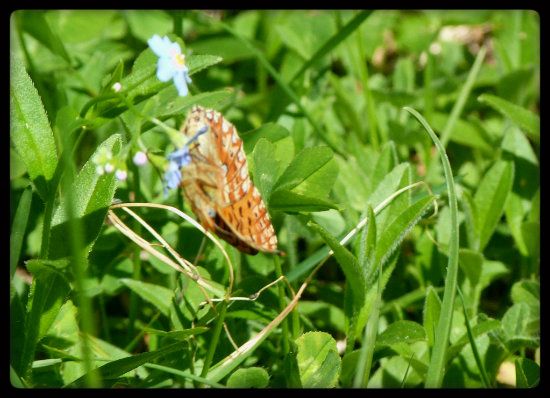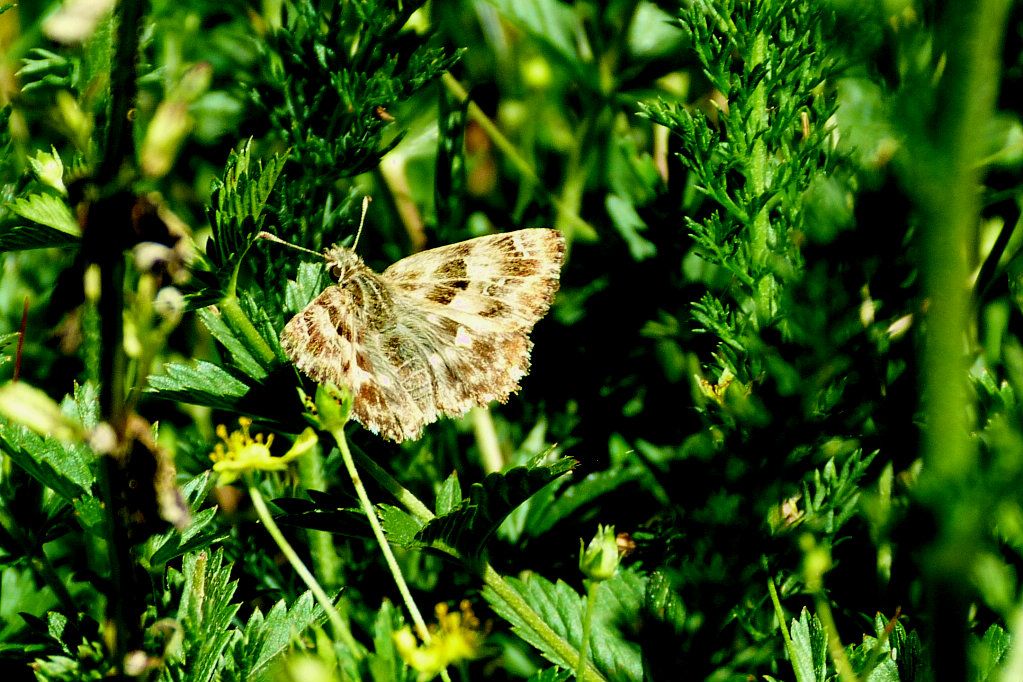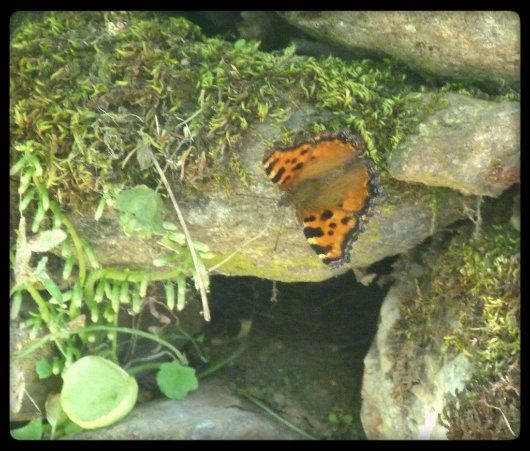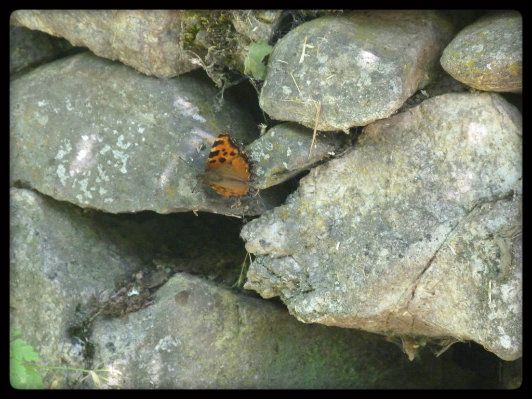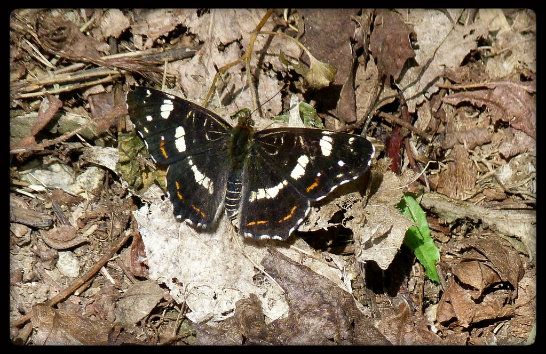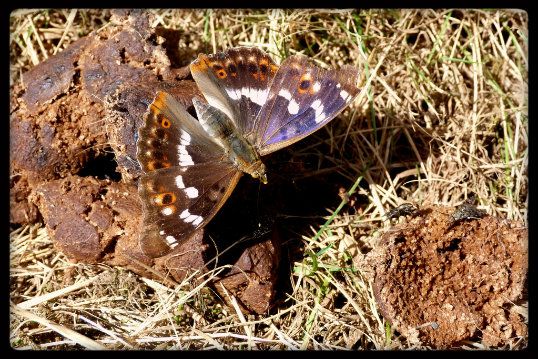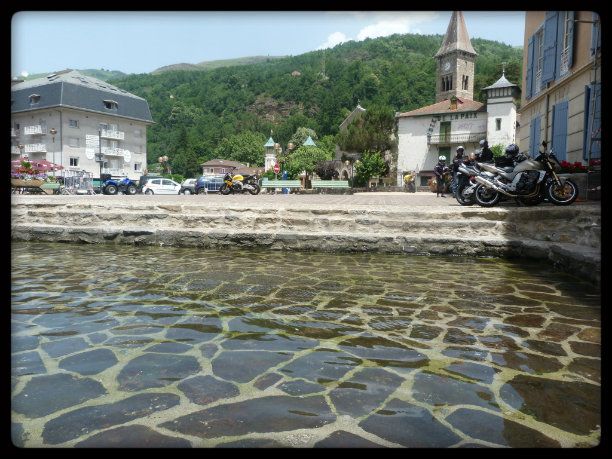Day 5 - Tuesday 26th June - Part 1
With the
canicule in full swing, I kind of knew today was going to be a spectacular day.
The télécabines weren't operational, so I took advantage of the offer of a lift from one of the hotel staff to the ski resort of Bonascre, tagging along with three guys from Derbyshire who had paid for a minibus journey to the start point of their 12 mile hike to the
haut plateau as they were spending 6 nights in various 'refuges' which are dotted all around the mountainsides in this area.
This saved me a 2 hour slog to the lower ski slopes, meaning that I was relatively fresh when I arrived there at 9.30am.
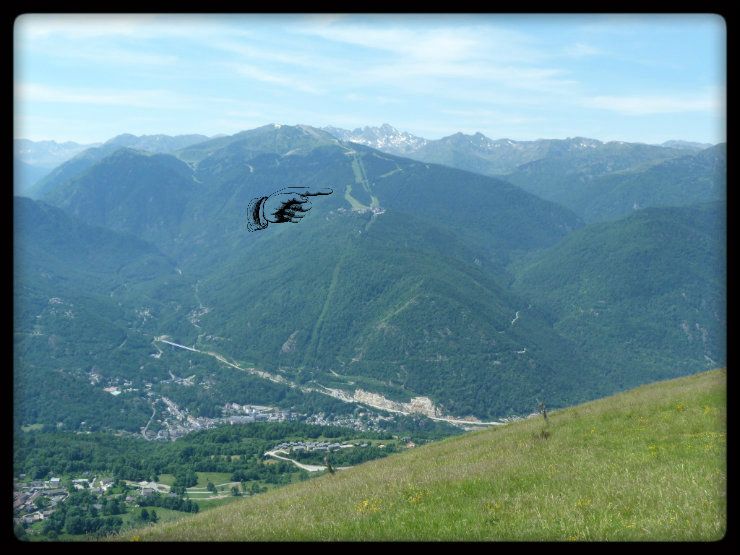
The highlighted area is the part I wanted to explore, i.e. the winter pistes used by skiing enthusiasts - Ax-les-Thermes is the built up area in the lower valley.
The resort of Bonascre lies at 1400m above sea level, and once I had been dropped off there, I took one look at the area I was set to climb and it was as close to heaven as anyone could imagine:
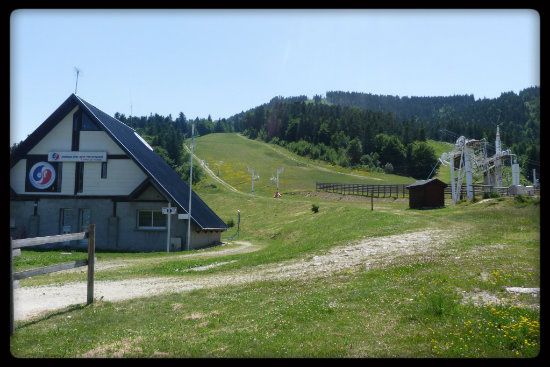
Clearly, these ski slopes are pummelled during the winter, but it doesn't take long for nature to recover, and the lower slopes were absolutely carpeted with bird's foot trefoil, which was home to many, many dozens of Silver Studded Blues which were just becoming active at this time of day.
I was aware almost straight away of the significant numbers of
erebia flying in this area, but it was an altogether quite different species that first made me reach for my camera:
23. Purple Edged Copper
Lovely butterfly, but one which I only saw on this first piste at lower levels. I guess there were about a dozen in total.
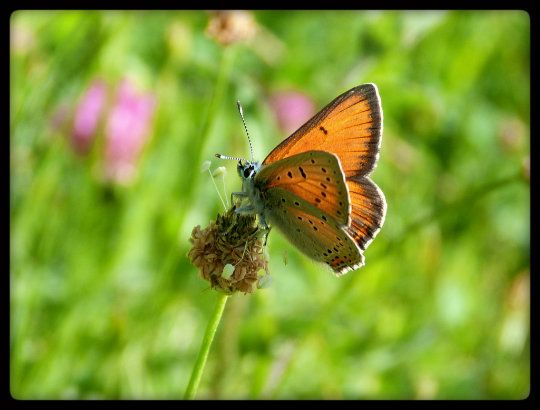
Eventually, I managed to 'collar' an
erebia that settled for a few brief moments:
24. Bright Eyed Ringlet
Taking a chance here, but I reckon
oeme is the species in these next two shots:
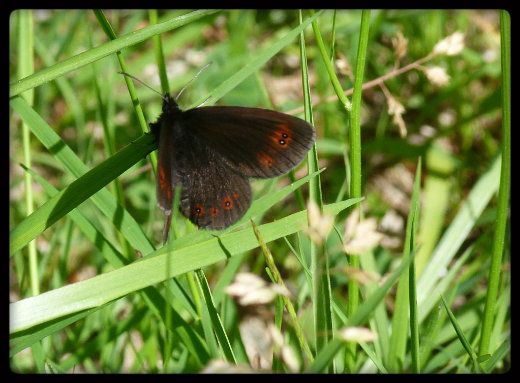
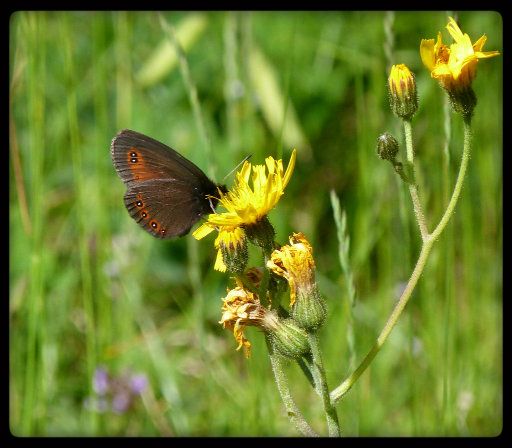
Physically, it was a slog getting up those slopes, but to be honest, I was so entranced by the sights, smells and sounds around me I scarcely noticed it. This habitat was simply amazing - closely cropped grassland, light woodland, marshy areas, etc...it really was almost paradise. This is a summer view of what the skiers must see when zooming downhill in February:
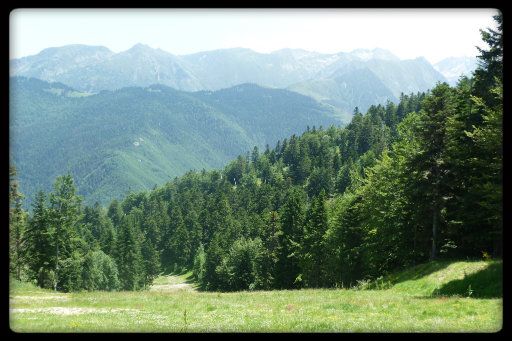
I did a figure of eight ascent, trying to avoid the steepest inclines, but by the time I got two thirds of the way up, there was no alternative but to hike directly upwards through marshy ground. I had to stop every 50m or so to catch my breath, but my spirits were raised when I saw a greyish coloured Clouded Yellow type butterfly making its way towards me. Thankfully, it settled soon after passing me:
25. Mountain Clouded Yellow
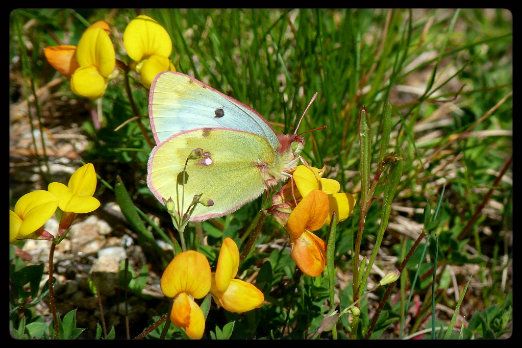
I was thrilled to see such a montane species as this, and by the time I reached the top of this piste, I realised that a smaller species of
erebia seemed to be becoming ever more numerous:
26. Mountain Ringlet
I've seen this butterfly in the UK, and I'm pretty sure that this was the insect flying in numbers at this 1700-1800m juncture. As ever though, they weren't keen to settle, and even when they did, grass stems were a constant obstruction:
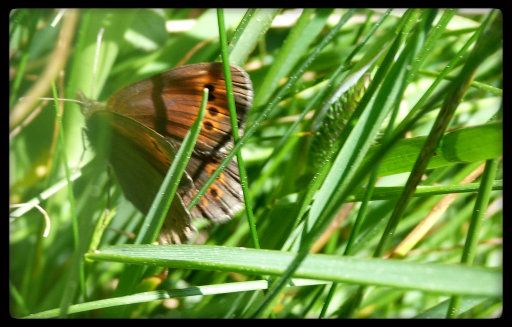
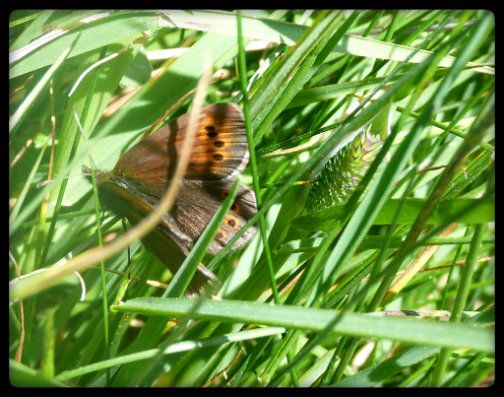
Once the marshy slope had been negotiated, I emerged onto the upper plateau, which was largely dry and stony, but was still replete with butterflies of numerous different types. In front of me was one last incline that I decided not to ascend (it would have added about 100m more to the altitude, but the terrain was largely bereft of plant life and by this time all I wanted to do was rest my feet and soak in the views):
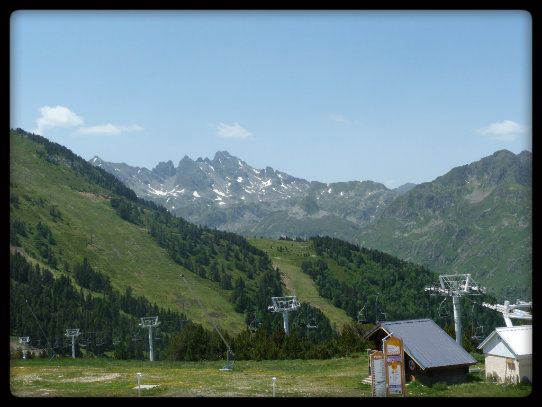
There was a group of fir trees which afforded some shade, so I took a quarter of an hour's time out whilst I ate a couple of pains au chocolat and swigged some water. I then stood up to admire the scenery and watch what I think were vultures soaring on the steep slope generated thermals:
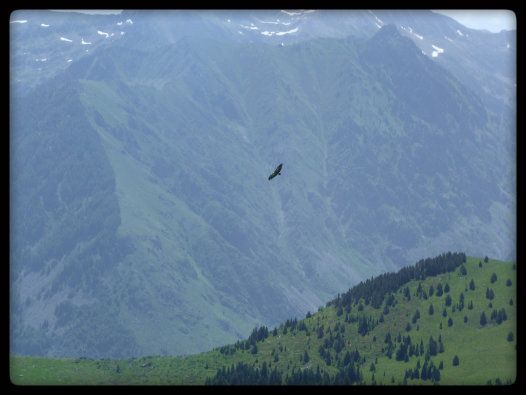
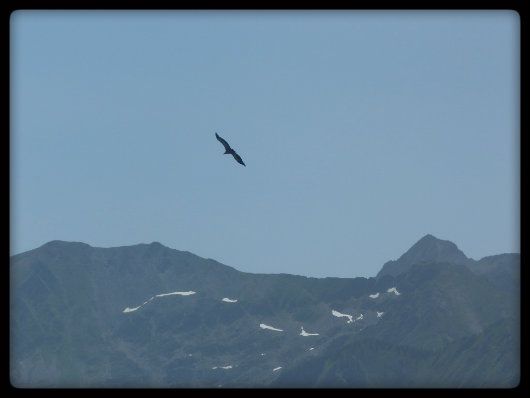
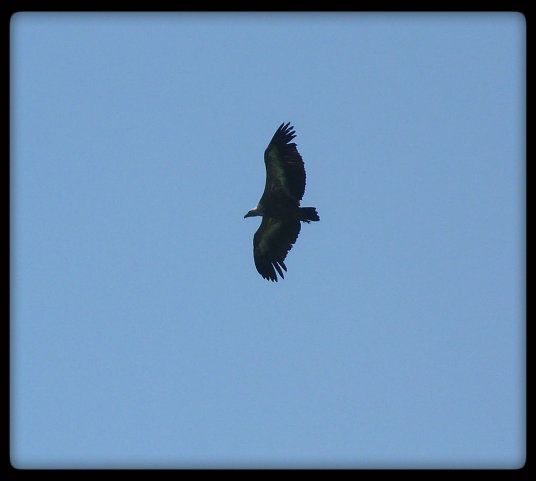
Rarely in my life have I experienced such a feeling of peaceful tranquility. The temperature in the lower valley reached 35c today, but at 2000m altitude it was about 22c, with no appreciable wind and virtually no cloud cover. In addition, the fact that the ski lifts were still out of use until the following Saturday meant that there was scarcely another soul around to break the silence. I saw no more than half a dozen other human beings in the 6 hours I was up there.
Reluctantly, I realised I had to move back down, and although I followed the same track to begin with, I peeled off about halfway down to walk through the light woodland. Within a couple of minutes, a butterfly was persistently buzzing above my head. It appeared to be a Speckled Wood, but it stayed far too long in the air, and when it finally came to rest I could see that it was a species I'd hitherto not seen:
27. Map Butterfly (spring brood)
Comma-like in its territorial behaviour, this individual had clearly established a lek in this short stretch of open woodland. It was a little beaten up, but still a delight to someone who had never seen one before.

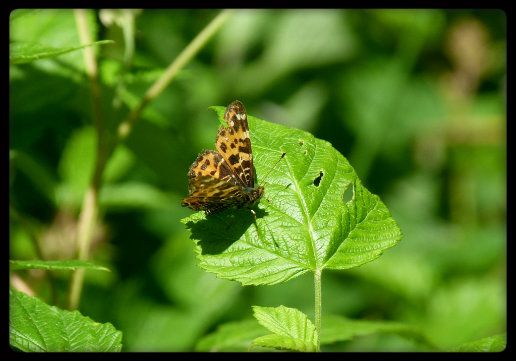 Daily miscellany
Daily miscellany
I will deal with the minutae in Part 2 which I will post later. Suffice to say that there were several other butterflies whose identity I need some assistance with. There is also the question of the British species that were flying here, which in some instances is quite eye-opening.

